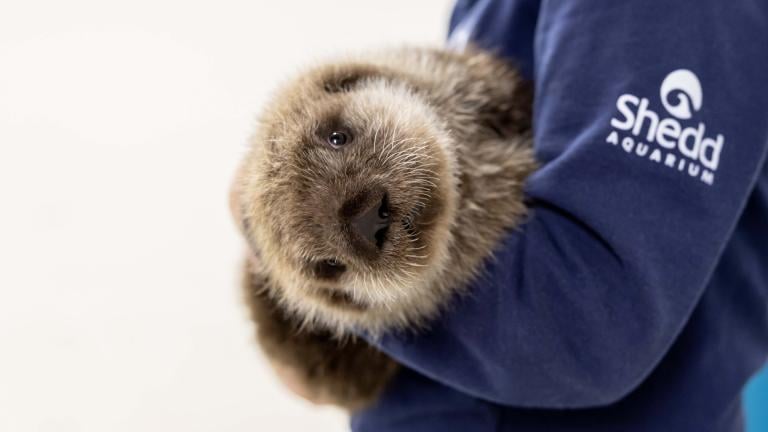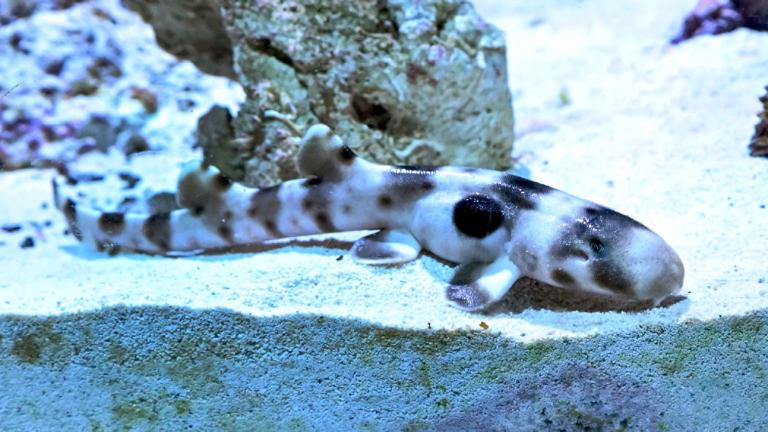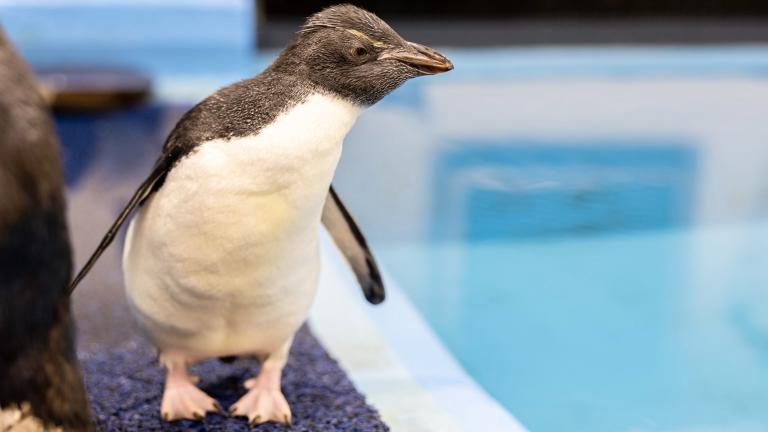You’ve heard of plant-based meats — popular alternatives to the real deal designed to taste like meat but are made of ingredients like soy. Even McDonald’s got in on the meatless meat market, testing out whether customers would swap a Big Mac for a McPlant.
Whether you’re into the taste or not, cattle emit a lot of greenhouse gases, so forgoing meat can be an eco-friendly choice.
The environmental stakes are also high under the sea. The world’s oceans and the marine life that live in them are under threat.
Two Chicago-area women have made it their mission to tackle the issue, with a new business venture billed as the “future of seafood.”
They’ll soon supply restaurants and grocers in Asia, Europe and the U.S. with a new spin on the plant-based trend: faux fish.
“I read a stat recently from a 2020 report (the 2020 State of the World Fisheries report by the Food and Agriculture Organization of the United Nations) that shared that 35% of our global fisheries are overexploited, and that’s up 10% from 1990,” said Shedd Aquarium director of conservation Jaclyn Wegner. “So it’s an exponential impact.”
Warming temperatures due to climate change, pollution and overfishing put not only fish at risk, but also the diets of populations that depend on them.
“When fishing boats go out and throw their nets in, it’s creating waste,” said Brittany Chibe, the co-founder and chief growth officer of Aqua Cultured Foods. “Fishing nets are just left in the oceans, and it’s bottom trawling. And so they’re literally scooping up the bottom of our oceans to catch whatever, and then you run into issues like bycatch, right. So we’re scooping up turtles in these nets or dolphins.”
Chibe witnessed the damage first-hand when diving the Great Barrier Reef.
“When people talk about coral bleaching, I couldn’t wrap my head around what that meant,” Chibe said. “And then I go there and it’s truly skeletons. It’s coral skeletons in the ocean. And without the corals, fish aren’t able to feed on it. And it just creates this terrible domino effect. Just really killing off this ecosystem.”
Doing something about it was the appeal when Anne Palermo invited Chibe to be part of her start-up.
The duo met years prior at a networking event for area food entrepreneurs; at the time, they were each running their own health food companies.
Palermo got the idea for Aqua Cultured Foods in early 2020 when she honed in on estimates the world is set to grow by 2 billion people within decades, particularly in countries like India and China where fish is a dominant part of the diet.
“Asia itself consumes about 70% of the world’s seafood,” Palermo said. “Understanding that that’s the No. 1 protein produced and consumed — and that is also the area of the world that’s having the largest population boom — what we’re going to see is that due to overfishing and climate change, we’re running out of fish in the sea. So the only real solution that we have is alternative seafoods. Because if people continue to eat fish at the rates they are, there’s not going to be any left.”
She believes her company could be key to serving a solution.
While patents are pending, Palermo and Chibe are tight-lipped about how they make their versions of tuna, scallops and shrimp.
They believe they have the chance to be a global leader in alternative seafood, that they’ve got a lock on their precise method — but they aren’t the only faux fish in the sea.
“We have to be careful,” Palermo said. “There are so many companies out there now trying to mimic our product and our technology.”
They’ll share this much: Their copy-fish are made of a mushroom root called mycelium, which is fermented and manipulated.
“The great thing about this product and how we grow it is that it very, very closely resembles seafood to begin with,” Palermo said. “And so what we’re able to do is, through the growth process and the technology and just, like, the environmental conditions and the nutrition that we feed our microorganism, or our kind of mushroom, it develops and grows so we can change the texture of the product.”
But they’re mindful the product doesn’t get too fishy, in the colloquial sense — meaning not reliant on additives and preservatives.
“It is very clean-label,” Chibe said. “Our product is two ingredients and then we can add color and flavor downstream to create different species that we want to replicate.”
The catch: They want to make sure when they go to market in restaurants and grocery stores, their versions of whitefish and salmon match the real deal.
“Our whole business position, or value proposition, is to be a one-to-one replacement for traditional seafood,” Palermo said. “And so everything — taste, texture, nutrition — is positioned to be exactly the same.”
With some exceptions.
They want their product to be more affordable and for it to last longer (the current version is good for up to four weeks when fresh, and much longer when frozen). Unlike traditional seafood, there’s no hazard of mercury or other contaminants, and while some of the product is designed to be eaten as if raw, it isn’t actual raw fish — meaning those who are pregnant and immunocompromised can eat it without worry.
Making that happen is part of food product developer Devon Truelove’s job.
He’s responsible for fine-tuning and said the product has come a long way in look and flavor since he started.
“I work on the color,” Truelove said. “I work on marination development, shelf-life stability.”
A current project is designing the company’s scallop alternative to resemble the circular coins of the real mollusk.
Aqua Cultured can’t say when the public will get to try, just that the company plans to test its products in restaurants in Chicago and other cities “soon.”
The company is in the midst of scaling up to make 5,000 pounds of plant-based seafood — enough to begin selling it wholesale — though the end goal is to make many times that and to swim in European and Asian markets.
If you’re eager to do your part, the Shedd’s Wegner has advice.
“Salmon, tuna and shrimp are the most popular seafood items here in the United States,” Wegner said. “If we continue to eat those in really big amounts, we’re going to continue to put pressure on those wild populations. So if people can think about diversifying their seafood diet or looking at local fish sources. Ideally you do know a lot about where your seafood is coming (from). You could ideally know how it was caught, where it came from and what the general population health of that seafood is coming from.”
Wegner said she recognizes that can be difficult information for a consumer to gather. She recommends looking for grocers and restaurants with certification that proves the fish they sell is sustainably raised or caught.
The Shedd has list of seafood distributors and restaurants committed to sustainable practices.
The Shedd also partners with Monterrey Bay Aquarium on its Seafood Watch. The website allows users to type a seafood species into a search bar and it will give the green light on best choices. Users can also browse fish to avoid or find those that are the “best choice.”
Farm-raised (sometimes called “aquacultured”) fish aren’t always the answer. Wegner said they may be raised with hormones and pesticides, so again it’s a matter of verifying origin, practices and looking for a certification seal.
Wegner said another good option is to eat local. The Great Lakes have complications, but they’re less exploited than the ocean. Good choices may include trout, whitefish or Copi (the name for the invasive fish formerly known as Asian carp), which could help minimize the infestation.
Follow Amanda Vinicky on Twitter: @AmandaVinicky








